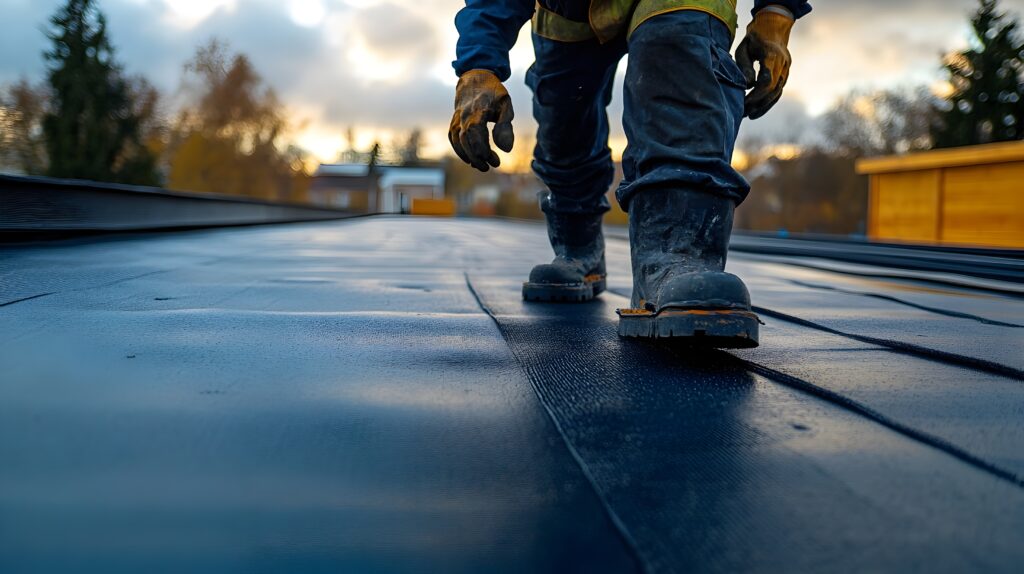Slips, trips, and falls are not quirky plot twists, they’re safety fails you can totally prevent.
Your floor might look innocent, but one rogue puddle or loose cable can turn a regular Tuesday into a full-on emergency. Whether it’s coffee in the breakroom or chaos in the warehouse, workplace surface hazards don’t discriminate.
The upside? These hazards are 100% preventable if you stop winging it and start walking the walk, safely.
If it’s slick, sticky, or sneaky, it’s a hazard. Time to clean up your act (literally).
Wet surfaces are the OG villains in workplace injuries. Here’s how to stop them:
- Routine Cleaning: Not just when the CEO visits. Set a cleaning schedule and stick to it.
- Spill Patrol: Wipe it up right away and flash those caution signs like you’re guarding a VIP section.
- Non-Slip Mats: Put them at entrances, especially when it’s raining, snowing, or sleeting drama outside.
- Drain the Drama: Fix any areas where water loves to hang out. Soggy floors are canceled.
Clutter is not character, it’s a lawsuit waiting to happen:
- Designate a Home for Everything: If it doesn’t have a spot, it doesn’t belong in the walkway.
- Cover Those Cables: Tripping over cords is so last decade. Use proper covers or reroute them altogether.
- Close Your Drawers: Cabinets left open are silent saboteurs. Don’t be *that* coworker.
- Walkthroughs = Lifesavers: Regular inspections keep the drama low and the safety high.
Fix uneven surfaces before they fix you:
- Inspect and Repair: Broken tiles, loose mats, and cracked floors don’t just “add character.” They add injuries.
- Secure Rugs: No one wants to surf across the lobby on a rolled-up mat.
- Label the Danger: If you can’t fix it fast, slap a bright sign on it. Visibility saves ankles.
You don’t have to be on a scaffold to fall. Even desks have danger zones.
Working at height isn’t just a construction thing. Warehouses, storage rooms, and even modern offices can turn into vertical nightmares. Here’s how to not fall for it, literally.
Guardrails or get out:
- Install them anywhere people work 4+ feet above the ground. That means you too, warehouse mezzanine.
- They need to be 42 inches tall, include midrails, and handle a 200-pound push like a champ.
Safety nets for the win:
- If guardrails aren’t an option, use nets for areas over 25 feet. No, a yoga mat doesn’t count.
Personal Fall Arrest Systems:
- Make sure the harness fits, tight, but not like a corset.
- Inspect for frays and damage like your life depends on it. Because it does.
- Stick to the manufacturer’s rules. No DIY modifications, no exceptions.
Falling objects hurt too, not just the fallers:
- Use toeboards like the unsung heroes they are. They keep tools where they belong, up top.
- Install canopies for work happening overhead. It’s not just shade, it’s a shield.
Smart access is safe access:
- Secure ladders and stairways with rails or gates. You don’t want surprise detours mid-climb.
- Level ground is ladder BFF. Uneven footing is a one-way trip to the ER.
- Stairs should be even, handrails secure, and not a funhouse attraction.
If it says “weight limit,” believe it, your back and the floor will thank you.
You wouldn’t overload a plate at a buffet (okay maybe you would), but overloading floors, platforms, or shelving? That’s asking for disaster.
Safe loading isn’t guesswork, it’s math:
- Weigh Your Stuff: Use real scales, not your best estimate after three coffees.
- Distribute Smart: Spread out the load evenly or risk putting stress where it hurts most.
- Stick to the Rules: Follow those manufacturer guidelines like they’re OSHA gospel. Because they are.
Train like you mean it:
- Teach the Team: Everyone should know what “over the limit” looks like, and what it costs.
- Inspect Surfaces: Weak spots, dents, or sagging platforms? That’s a hard no until fixed.
Safety culture is built one small move at a time. Be the one who makes them.
- Train often: Housekeeping, fall protection, and load limits aren’t “one and done” topics.
- Equip your crew: Cable covers, harnesses, non-slip mats, get the right gear and actually use it.
- Open-door policy: Let workers report hazards without feeling like they’re snitching. Safety isn’t drama, it’s teamwork.
Your next step? Make your workplace safer, starting right now.
Let’s recap your battle plan:
- Slips, Trips, and Falls: Keep it dry, clutter-free, and level.
- Fall Protection: Rail it, net it, or harness up, whatever keeps you upright.
- Load Limits: Know them, teach them, and never test them.
Step up your safety game, literally and figuratively.
If you’re unsure whether your office or workplace is up to code when it comes to slips, trips, or load safety, now is the time to act. Talk to your safety team, walk your workspace, and start implementing changes that matter.
Need a hand turning safety talk into real-world action? Learn to identify hazards, prevent injuries, and own your safety game with our Workplace Surface Safety Training Course.
And while you’re at it, take that safe streak a step further. Get the full lowdown on cubicle chaos, ergonomic fails, and everyday hazards with our Office Safety: Hazards and Prevention Training Course. Because even comfy chairs can be dangerous when no one’s paying attention.
References



